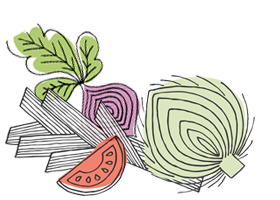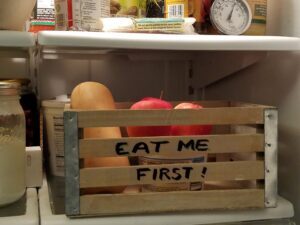
Volunteer
Donate Food
Compost
Reduce Packaging Waste
Reduce Commercial Food Waste
Reduce Personal Food Waste
Buy what you’ll eat
Eat what you buy
Smart Storage
Buy what you’ll eat
By simply making a list with weekly meals in mind, you can save money and time and eat healthier food. If you buy no more than what you expect to use, you will be more likely to keep it fresh and use it all.
Keep a running list of meals and their ingredients that your household already enjoys. That way, you can easily choose, shop for and prepare meals.
Make your shopping list based on how many meals you’ll eat at home. Will you eat out this week? How often?
Plan your meals for the week before you go shopping and buy only the things needed for those meals.
Include quantities on your shopping list noting how many meals you’ll make with each item to avoid overbuying. For example: salad greens – enough for two lunches.
Look in your refrigerator and cupboards first to avoid buying food you already have, make a list each week of what needs to be used up and plan upcoming meals around it.
Buy only what you need and will use. Buying in bulk only saves money if you are able to use the food before it spoils.
Eat what you buy
Move food that’s likely to spoil soon to the front of the shelf or a designated “eat me first” area each week.
Fix it to a container as a reminder to your family to use up leftovers or other food that will go bad soon.
Smart Storage
- This website has suggestions for storage for specific types of food. Not all storage methods are created equal. When smart storage practice is used along with the other food waste reduction strategies, families will save money and help stop wasting the water, energy and land associated with food waste.–https://savethefood.com/storage


